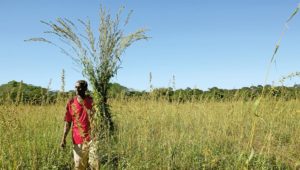
Find out more about the Palmarosa plant of our Aromatherapy Herbarium blog series.

PALMAROSA
Cymbopogon martinii
var. motia
DESCRIPTION

Palmarosa (Cymbopogon martinii) is a large herbaceous plant belonging, like citronella, to the Poaceae family. It is native to India and Nepal.
ADVICE
As has been clearly understood in Indian traditional medicine, essential oil of palmarosa can facilitate delivery, though it should only be used when the birth is imminent.
DO NOT USE IN
– pregnant or breast-feeding women,
– children under the age of six years,
– persons allergic to one of the components (aldehydes, geraniol, limonene, linalool),
– subjects with asthma without the advice of an allergologist before the first use.
RECIPES
Deodorant
Using your fingertips, simply apply a few drops of essential oil of palmarosa to the soles of the feet and armpits, or to any other concerned area.
Libido
2 drops of EO of palmarosa for 10 drops of hazelnut CO.
Massage the lower back with a few drops of essential oil of palmarosa, either pure or diluted in carrier oil. Diffuse a few drops of essential oil of palmarosa into the ambient air using a diffuser.

When crumpled, its long and narrow leaves release a fragrance similar to that of roses. Its flowers, arranged in plumes, are similar to those of geranium.
Relatively uncommon until recently in Western phytotherapy, even though it unquestionably belongs to the healing plant category, palmarosa was long used virtually exclusively for fraudulent reasons. Indeed, its essential oil was sent over land to Western Europe from Bombay. On passing through Bulgaria, thanks to its soft and fine odour, similar to that of the queen of flowers, it was used to cut, and hence to counterfeit the local production of essential oil of roses (Rosa damascena), also called “Bulgarian roses”, by introducing a much less expensive element. Times have fortunately changed, even though a few unscrupulous suppliers here and there are tempted by the substitution. We must therefore remain vigilant! For thousands of years, palmarosa has played an important role in Indian traditional medicine (Ayurveda), in which it is appreciated for its tonic and healing virtues.
CULTIVATION AND PRODUCTION
Palmarosa is grown in India, Pakistan, Indonesia, Brazil, Madagascar and the Comoros. It has been distilled since the 18th century in India and Turkey.
FRAGRANCE
The odour of essential oil of palmarosa is soft and floral. It is reminiscent of rose, with notes of dry grass and pine.
EXTRACTION AND YIELD
Essential oil of palmarosa is obtained by steam distillation of fresh or dried leaves. Yield varies between 0.5% and 1.25%, i.e. five hundred grams to one kilogram of essential oil per hundred kilograms of plant.
CHEMICAL FORMULA
The dominant constituents of essential oil of Cymbopognon martinii are geraniol and geranyl acetate.
MAIN INDICATIONS
A potent antibacterial, antiviral and antifungal agent, essential oil of palmarosa has a stimulant effect on cells. It drains lymph and is effective against all skin problems, mycoses and excess perspiration.


Leave a Comment